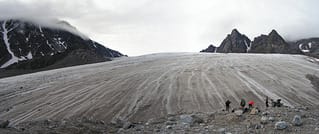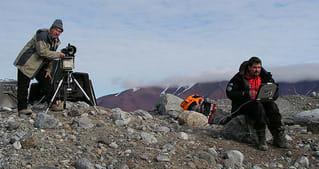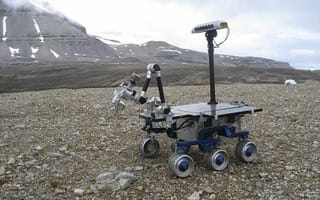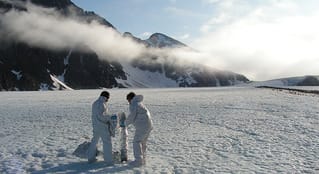
Commander Report
Gregory Leonard
12/08/14
----概略です----
今日は、Sol7ということで休みがもらえたようです。
エネルギッシュに楽しんでいます。村上さんが漢字とカタカナの指導をしました。全員で「火星」と漢字で書道をしました。
とはいっても、ハブの家事仕事を片付けて、いくつかのEVAスーツの修理も行いました。
今日は、午前午後の大半を映像の脚本作りで過ごしました。
これは、いくつかのMDRS-144のアウトリーチプロジェクトの一つとして使用されるアクション/冒険/SF映画として記録するための準備です。
脚本はほぼ出来上がり、キャストが選ばれそして小道具も準備されています。ビデオ撮影は、今週後半に始まります。
Murakamiさんは、チーフプロデュサー兼監督です。
*期待できますね!
JuhoさんとGregoryさんは、午後一杯、MDRSの7番目の部屋の建設をしました。
Heidiさんが美味しいパンを焼き、そして、今夜私たちがそれぞれで作って食べるためにパイ生地を作りました。
Gregoryさんは、このCrew144が如何に素晴らしいか、また一緒に成長していることを喜んでいますね。
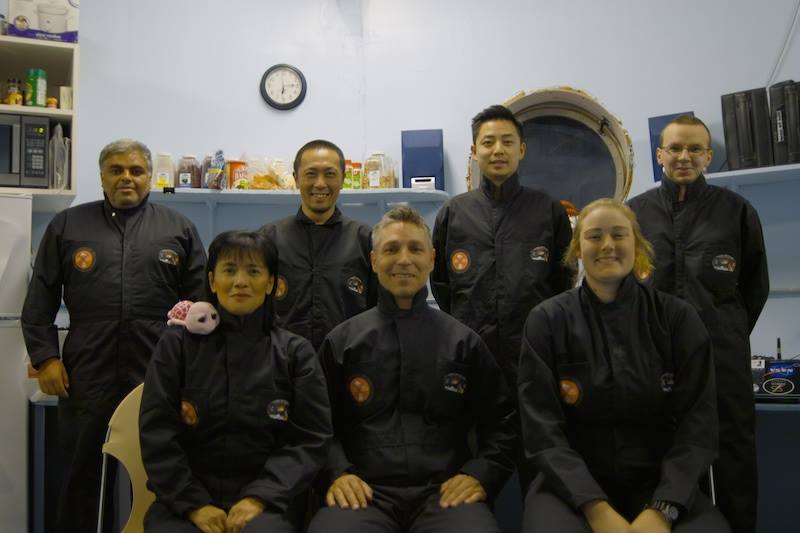
Victorさんがハブ内部の3D画像を作成しました。こちらです。
行ったことがない人はもちろん楽しめますし、行ったことがある人もたぶん懐かしいですよ!
----原文です----
Although it’s Monday on this our 7th sol in Mars analog simulation, it sure felt like a classic Sunday. All crew enjoyed a well-earned day off from EVAs, and we spent the day together in the Hab. Knowing that we had the day off today, we all stayed up till just-past midnight last night, listening to music, sharing personal videos from past explorations, some playing cards, joking, singing and chatting, and binging just a bit on our allotted stash of snack foods. This group can sometimes be quite electric together, kinetic and really fun. Before the evening was over we all learned and tried our hand at Japanese calligraphy, both Kanji and Katakana styles, this under the expert guidance of Biologist Yusuke Murakami. All took turns at painting the letters for “Mars”, and then having Yusuke paint our given names and then the meanings of our surnames. These small paintings are true works of art, and our individual names (including some new crew nicknames), are now nicely adorning the doors of our respective staterooms. It looks like an art museum in here!
Considering late evening party, most crew slept-in this morning, past our normal waking hour. Yusuke and I both enjoy photography, and we were up at 0700 to watch the unfolding of an incredible blood-red Mars-like sunrise, and also view the setting gibbous moon. Later this morning, we all enjoyed a hearty breakfast of eggs, bacon, and porridge, and for some of us, several cups of coffee. Fortunately there are few coffee drinkers here on MDRS-144; and so those of us that are, have a veritable surplus of java on hand.
There was a brief engineering EVA this morning, checking on generator diesel, propane gas, and water; plus the requisite taking out the garbage. Additionally, Engineer Victor Luo, XO, Heidi Beemer, and Yusuke completed some much needed routine repairs on some EVA suits (see Engineer report).
Much of the late morning and afternoon was occupied by movie script writing; we are prepping to record an action / adventure / sci-fi film to be used as one of our several MDRS-144 outreach projects. The script is mostly written, the cast selected, and the props designed. Filming is set to begin later this week. Yusuke Murakami is Executive Producer and Director.
Scientist Juho Vehviläinen and I spent some afternoon time working on building the MDRS 7th stateroom in the loft. We both enjoy building and working with wood; and as a relatively new homeowner back on Earth, I especially delight in home improvement projects on Sundays. I certainly did today as well. The Hab will soon have a basic, but professional-grade framed and secure stateroom in the southwest quadrant of the loft.
Meanwhile in the kitchen, Heidi Beemer baked another delicious loaf of bread this afternoon, and made pizza dough for the pies we each created and devoured tonight. This is such a fine group of people assigned to MDRS-144. We live together, work together, laugh together, create together, and there is a palpable and increasing sense of comfort, safety, and team loyalty developing amongst us. This is not simply a good sign or convenient, it is absolutely essential for this (and any) group to have established some level of real team trust before considering participation in the very serious and unforgiving conditions that the FMARS site will dish out during the yearlong, high Arctic-based MA 365 mission. We are here, the crew of MDRS-144, growing stronger each day in trust, loyalty and friendship. Goodnight from the Hab.






























